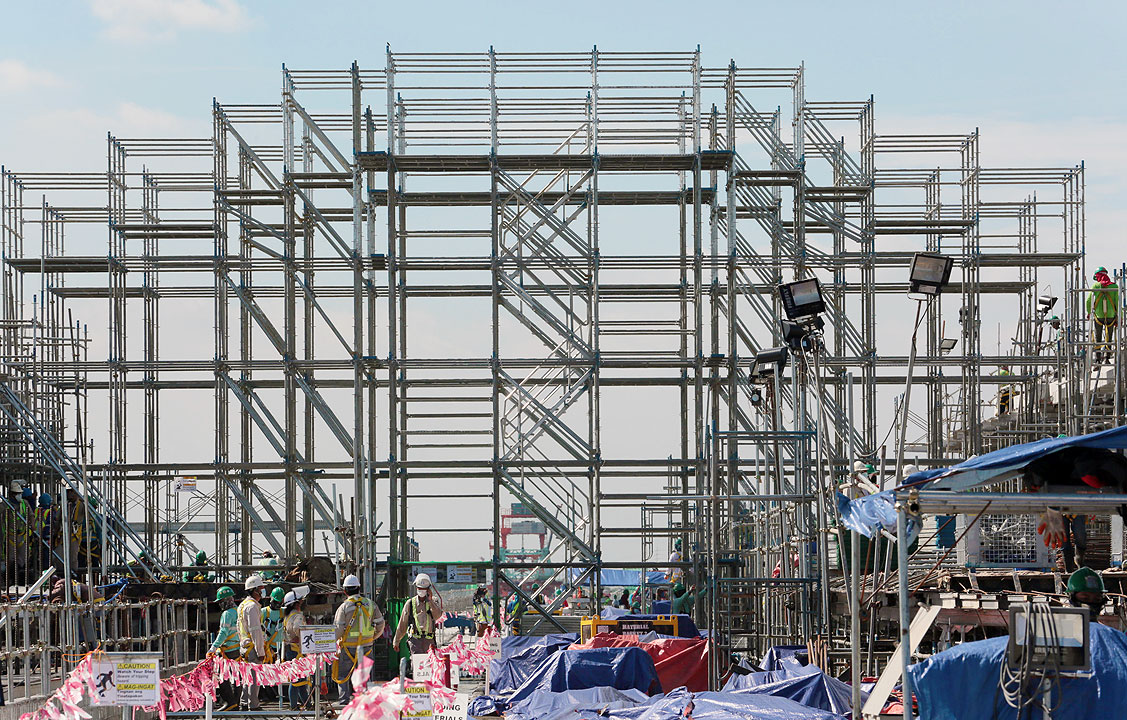
INFRASTRUCTURE SPENDING slumped by 16.4% in June, reflecting the high base effect and a significantly higher number of outstanding checks by some departments, the Department of Budget and Management (DBM) said.
Data from the DBM showed infrastructure and other capital outlays fell by P23.5 billion to P119.4 billion in June, from P142.9 billion in the same month a year ago.
The DBM attributed this to the “combined effects of high base, timing of releases to the Department of National Defense (DND) for its Revised Armed Forces of the Philippines Modernization Program (RAFPMP) and outstanding checks recorded for capital outlay-heavy departments.”
It noted that infrastructure expenditures in June last year were higher compared with this year after disbursements spiked after the lifting of the election ban.
“Capital expenditures by the DND in June last year were also significant, covering defense modernization projects. In contrast this year, most of the payables related to the RAFPMP are scheduled for this second semester,” the DBM said.
The DBM also noted “sizable” outstanding checks as of end-June from the Department of Public Works and Highways (DPWH) amounting to P24.4 billion, and Department of Transportation (DoTr) amounting to P11.6 billion.
“These compared to only P18.5 billion and P0.3 billion for the same period in 2022. The huge outstanding checks recorded may be attributed to billing/payment concerns encountered by line agencies, such as late/incomplete submission of documentary requirements to facilitate release of checks/payments, and contractors’ non-encashment of checks issued,” it added.
For the first six months of the year, expenditure for infrastructure and other capital outlays rose by 7.8% year on year to P507.2 billion. This was also 5% higher than its P483.1-billion program during the period.
The DBM said that improved infrastructure spending during the period was due to the “faster implementation of construction activities and payments for completed infrastructure projects of the DPWH.”
“These offset the lower-than-expected capital outlay disbursements recorded in the DND and DoTr mainly due to the ongoing implementation and procurement of their respective projects,” it said.
“More specifically, the DoTr cited the ongoing right-of-way and site acquisition and utility relocation which affected the implementation of its various land and rail transport infrastructure projects,” it added
Meanwhile, the overall infrastructure disbursements in the first half were equivalent to 5.3% of gross domestic product (GDP).
“When infrastructure components of transfers to local government units (LGUs) and subsidy and equity to government-owned and -controlled corporations (GOCCs) are accounted for, the overall infrastructure disbursements for the first semester of the year reached P608.7 billion, up by P15.5 billion or 2.6%,” the DBM said.
The government expects overall infrastructure disbursements to be equivalent to 5.3% of GDP this year, equivalent to about P1.29 trillion.
The government is planning to spend 5-6% of GDP on infrastructure annually until 2028.
However, the DBM noted that the growth of total infrastructure spending during the period was “weakened by the lower National Tax Allotments (NTAs) of LGUs.”
NTAs are the share given by the National Government (NG) to LGUs out of the take from all national taxes. The size of the NTA varies each year because it represents a 40% share of the NG revenue total from three years prior.
“The tax revenue base, from which the NTA shares of LGUs in 2023 is determined, was the actual tax collections in 2020. Due to the impact of the economic and mobility restrictions at the height of the pandemic, tax revenue collections in 2020 contracted by P323.4 billion or 11.4% from the actual outturns in 2019. Hence, resulting in lower NTA shares of LGUs for 2023,” the DBM said. — Luisa Maria Jacinta C. Jocson



